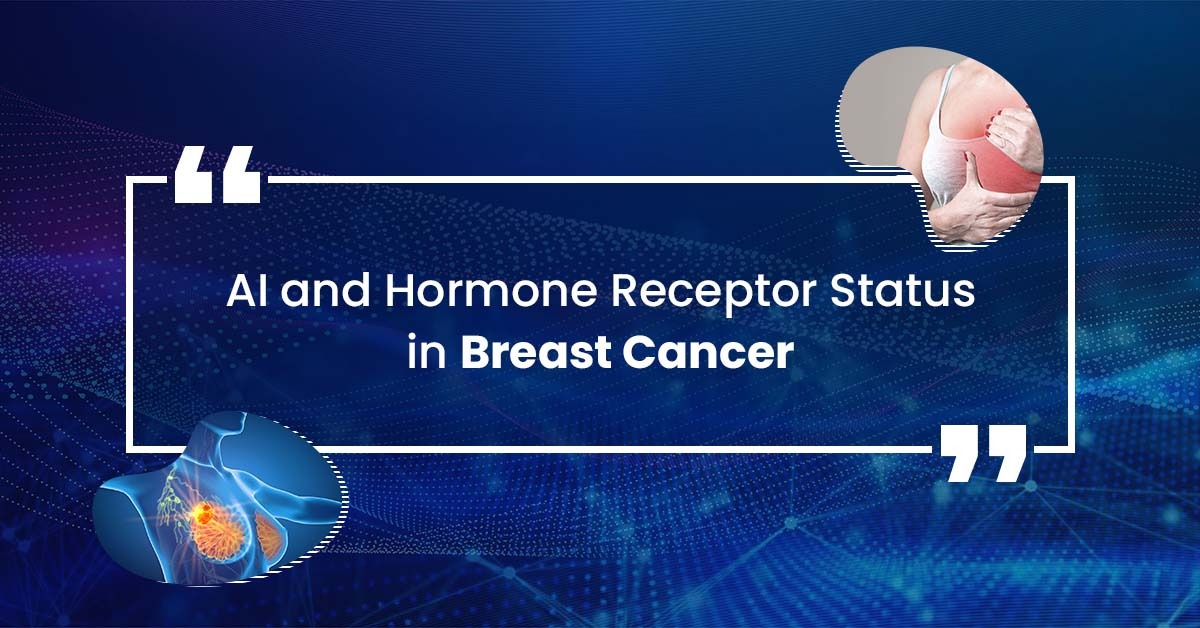Introduction
Breast cancer is a complex disease, and understanding its characteristics is crucial for effective treatment. One important factor that doctors look at is the hormone receptor status of the cancer. This refers to whether or not the cancer cells have receptors for certain hormones, like estrogen and progesterone, which can fuel the growth of the tumor. Artificial Intelligence (AI) is now playing a key role in determining hormone receptor status more quickly and accurately, helping doctors tailor treatments to each patient’s needs.
What is Hormone Receptor Status?
Hormone receptor status refers to whether breast cancer cells have proteins called receptors that attach to hormones like estrogen (ER) or progesterone (PR). These hormones can encourage cancer cells to grow. Breast cancers are often categorized based on their hormone receptor status:
Knowing the hormone receptor status helps doctors decide on the best treatment. For example, ER-positive cancers may respond well to hormone therapy, which blocks the effects of estrogen.
How AI Helps Determine Hormone Receptor Status
- Analyzing Tissue Samples: Traditionally, determining hormone receptor status involves testing tissue samples from a biopsy. This process has been known to be time-consuming and subject to human error. AI can analyze these tissue samples much faster and with greater accuracy, reducing the chances of mistakes.
- Improving Accuracy: AI systems use advanced algorithms to look at the patterns in tissue samples and predict hormone receptor status. This is especially helpful in cases where the status is unclear, as AI can detect subtle differences that might be missed by the human eye.
- Personalizing Treatment: By quickly and accurately determining hormone receptor status, AI helps doctors create personalized treatment plans. This ensures that patients receive the most effective therapies for their specific type of breast cancer.
Real-World Example: AI in Action
A study conducted at Stanford University used AI to analyze breast cancer tissue samples. The AI system was able to determine hormone receptor status with over 90% accuracy, significantly reducing the time needed for diagnosis. This allowed doctors to start treatment sooner, improving patient outcomes.
Data and Statistics
Practical Tips for Patients
- Ask About AI: When discussing your diagnosis, ask your doctor if AI tools are being used to determine your hormone receptor status.
- Understand Your Diagnosis: Make sure you understand your hormone receptor status and how it affects your treatment options.
- Follow Your Treatment Plan: Based on your hormone receptor status, your doctor will recommend the best treatment plan. Stick to this plan and attend all follow-up appointments to ensure the best possible outcome.
Conclusion
AI is revolutionizing how doctors determine hormone receptor status in breast cancer. By providing faster and more accurate results, AI helps ensure that patients receive the most effective treatment for their specific cancer type. As AI technology continues to advance, it will become an even more integral part of breast cancer care, leading to better outcomes for patients worldwide. safety and health. monitoring. As technology advances, these platforms will become even more effective, making high-quality breast cancer care accessible to more patients worldwide.
References
- Stanford University Study: “AI in Determining Hormone Receptor Status for Breast Cancer,” 2023.
- Journal of Oncology: “The Role of AI in Personalized Breast Cancer Treatment,” 2022.
- Breast Cancer Research and Treatment: “Advancements in AI for Hormone Receptor Status Determination,” 2021.



